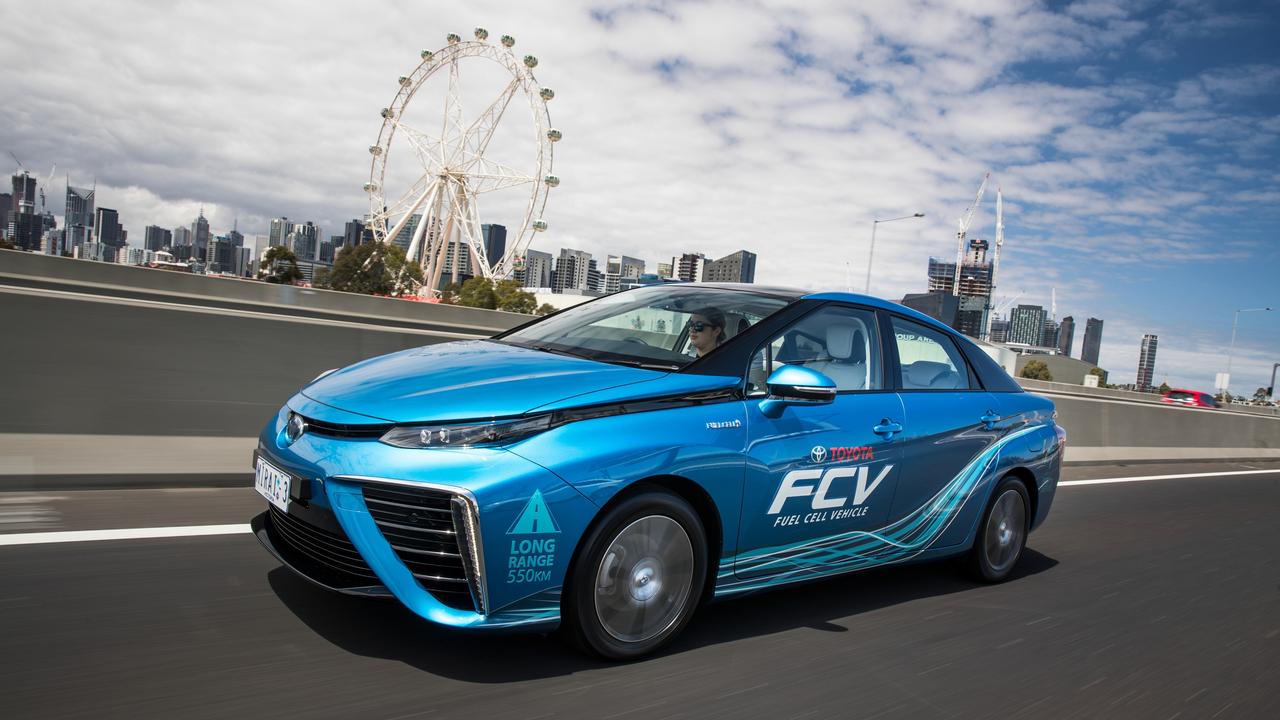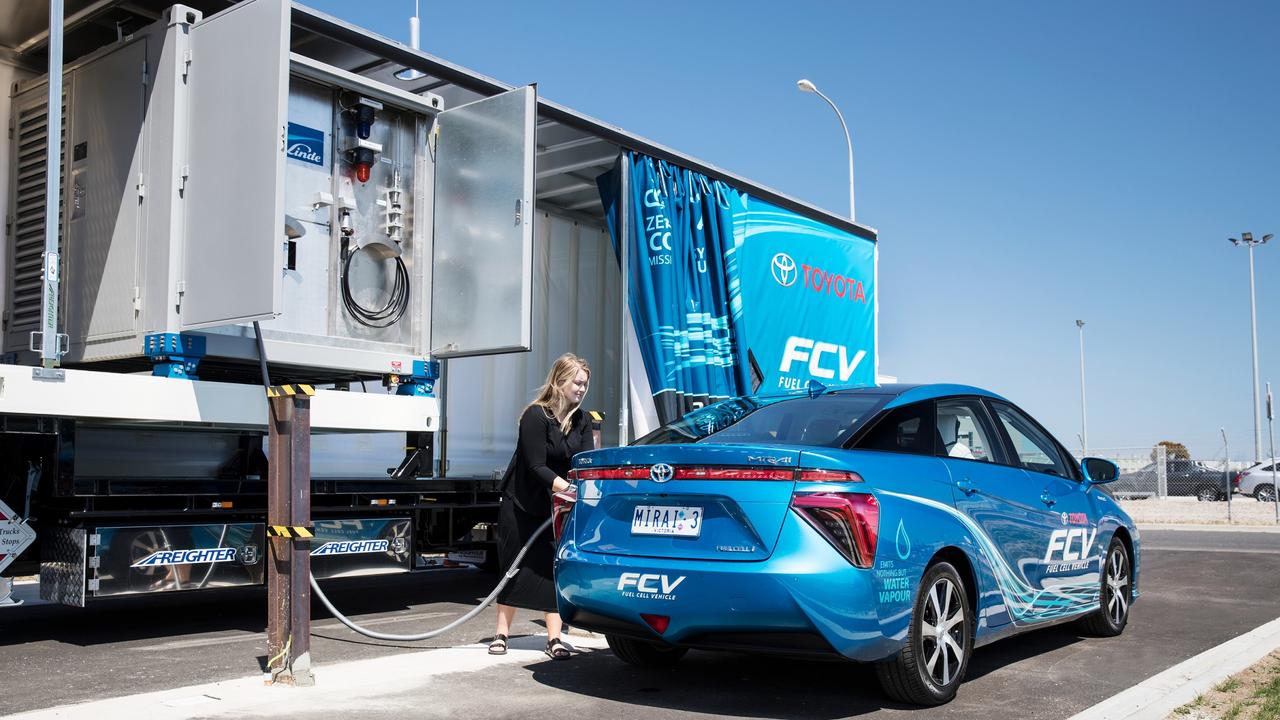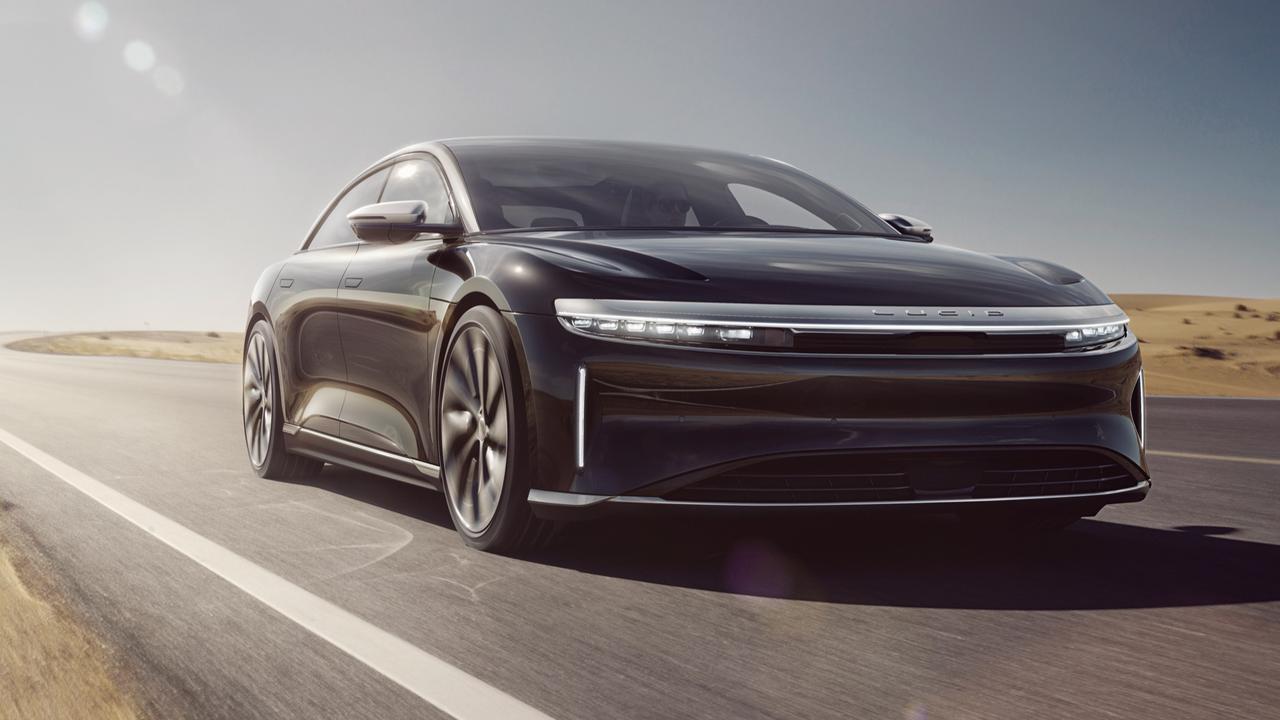Why Toyota thinks hydrogen powered cars are the future
The debate on the merits of EV versus hydrogen powered cars continues

THE future of motoring is elemental, according to the company that made hybrid vehicles a mainstream proposition.
Toyota views hydrogen-powered cars as the end game in the electrification of the car. The process started with hybrid vehicles, graduated to plug-in hybrids and evolved into pure electric vehicles.
Hydrogen is the next step, the company says, because the most abundant element in the universe has a greater energy density than the most modern batteries.That means hydrogen cars can travel farther than a pure electric vehicle. Refuelling times comparable with petrol cars add to the appeal.
EV adherents, led by Tesla founder Elon Musk, disagree with the efficiencies of fuel-cell vehicles compared with pure on-board battery storage. That’s largely because of the environmental impact and energy needed to create hydrogen in the first place and the energy losses in the fuel cell.
Rolling out public recharging stations for EVs is also far less expensive than the $1.5 million-$2 million needed for a commercial hydrogen refuelling pump. It is also a debate for another day …
At its most basic, Toyota’s Mirai fuel-cell vehicle employs the same principle as a Prius hybrid by converting fuel into electricity to power a motor.
Where the Prius uses petrol, the Mirai mixes hydrogen and oxygen gained from the air.
The Mirai uses 5kg of hydrogen gas under a hefty 700 bar of pressure in two storage tanks. The hydrogen combines with oxygen in the fuel cell to create electricity which is then fed into a nickel-metal hydride battery — just like the Prius — to power the vehicle.

Toyota says the range is about 550km and refilling the tanks costs about $60. The only emission is water.
The lack of refuelling infrastructure in Australia has led Toyota to fit a portable hydrogen compressor to a Hino-powered semi-trailer (inset) to provide a mobile demonstration of hydrogen vehicle technology.
That hydrogen is bought from commercial suppliers but Toyota Australia spokesman Andrew Willis says there is huge potential in generating hydrogen from biomass, including household waste.
ON THE ROAD
The Mirai is remarkable for not being remarkable. Beyond the absence of engine noise, it drives much like a Camry, right down to a 100km/h sprint time of about 9.6 seconds. The 355Nm of torque means only one gear is needed, though it does limit top speed to 170km/h.
The steering is light and direct but you can feel the car’s roughly 1850kg mass when cornering, even though it is packaged low in the car.
The Mirai has been built as a premium car, so the two rear bucket seats are nearly as comfortable as those upfront and the car has a relatively futuristic look to reinforce its position in the market.
There are no short-term plans to sell the Mirai in Australia but Willis says there is potential for fleets to use the vehicle because of the relative ease of refuelling the vehicles at a single location.
“We’re showing what the technology is about. There’s a lot of work to do in Australia before hydrogen cars are a reality but we need to get the conversation started,” he says.
It’s also worth noting Mirai is Japanese for future. That’s a fairly solid statement of support for the technology.
The fact that manufacturers from Hyundai to Mercedes-Benz are still working on the technology shows the debate on the merits of EV versus hydrogen is far from over.



